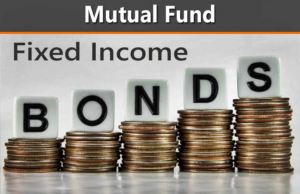
ETFs, a solution for fixed income portfolios?
Fixed-income securities are suffering from the current environment, in particular due to the reduction in bond stocks and liquidity constraints on individual securities. Exchange-traded funds (ETFs) offer several answers to these problems, as well as a viable alternative, says Erika Toth, Director, Institutional and Advisor Sales, Canada East – ETFs at BMO Global Asset Management, in a published article . in Benefits .
According to her, ETFs offer a number of advantages and allow you to:
- Facilitate negotiation
- Lower the costs
- Get instant diversification.
Liquidity, an asset
In terms of trading, ETFs add an element of liquidity to portfolios. Secondary market liquidity is a unique feature of ETFs. It promotes execution and is highly appreciated by managers, especially during periods of market tension.
However, it’s good to be careful, as ETFs trade on 14 different exchanges in Canada and most platforms do not provide a consolidated listing.
To get an idea of an ETF’s true liquidity, it’s good to look at the spread between the bid price and the ask price, suggests Erika Toth. Bond ETFs trade based on these two prices and adjust to the value of the underlying bond basket.
A single trade on an ETF exposes the investor to the buyer while a basket of bonds sometimes requires several trading days.
Lower costs
ETFs attract investors primarily for their lower costs. However, there are some things to remember before trading them.
First of all, the management expense ratio: this includes the custodian and valuation fees, and any other service required for the management of the fund.
The bid price, ask price spread: the latter depend in particular on the volume of the ETF, its assets under management and the liquidity of the underlying securities.
Premium or discount: the difference between the market price of the ETF and its net asset value is a premium, if the market price of the product is higher than its net asset value, or a discount, if on the contrary the market price of the ETF is lower than its net asset value.
The opening and closing of the market: it is not recommended to trade an ETF 15 minutes after the market opens or 15 minutes before the market closes, because ETFs are then very volatile.
Commission: It is important to consider the commission paid to the broker for trading.
Diversification, always diversification
Fixed income ETFs allow investors to gain exposure to market segments that were previously difficult to access. We can thus think of high-yield securities and emerging markets.
They can help manage duration, credit risk and geographic diversification, as they allow you to adapt to changing markets.
ETFs offer many advantages. In addition to being more transparent and lower cost, they bring diversification and an element of liquidity to portfolios. However, you have to learn how to use them before jumping in too quickly.


